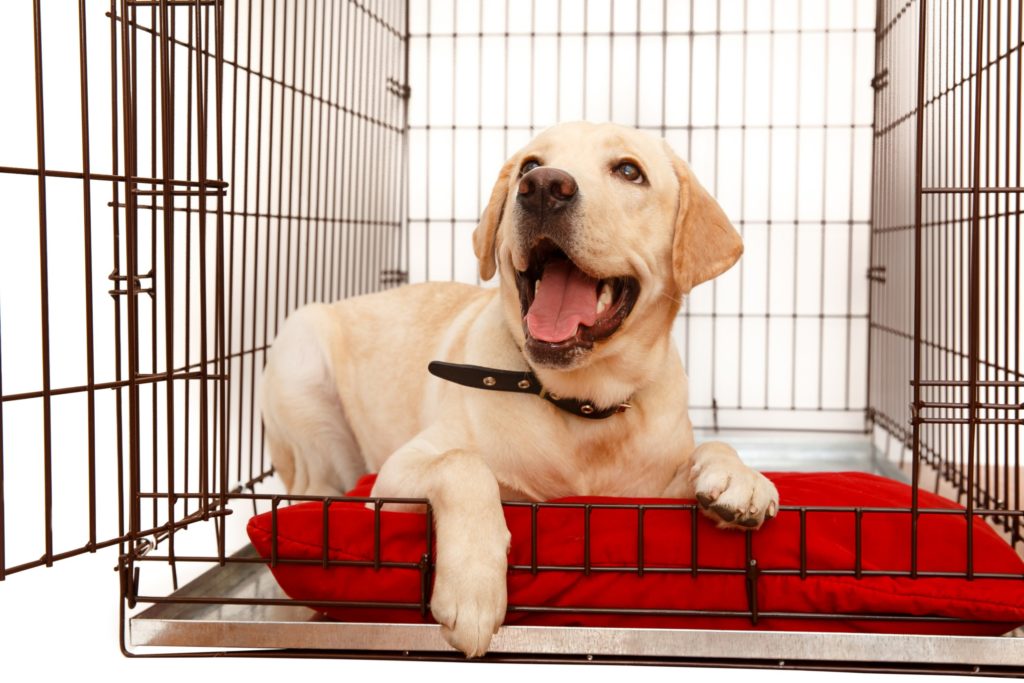What To Know About Crate Training Your Dog
Crate training is always a topic of discussion among dog owners. Some owners see it as confining their dog, while others view the practice as a positive environment for their dog to rest and stay safe.
The fact of the matter is that most veterinarians and trainers recommend crate training, especially from a young age.
If you’re on the fence, you’ll benefit from understanding the ins and outs of crate training. Let’s start by taking a look at the purpose.

What Is the Purpose of Crate Training?
In terms of why people crate train, it comes down to safety, security, and prevention.
A crate is a place for your dog to be when you’re not around or are unable to supervise them for a short period of time. When trained properly, your dog will come to view their crate as a sanctuary: somewhere they can rest and let their guard down.
Crate training is also a helpful tool when house training a puppy. Dogs will typically avoid going to the bathroom where they sleep. Keep in mind, however, that there is a limit to how far you can and should push that boundary. You never want your dog to be uncomfortable or unable to relieve themselves when needed.
How to Crate Train Your Dog
How you go about the crate training process and what type of environmental precedent you set will significantly impact how your dog perceives their crate.
It’s essential to take the process slow and look for signs from your dog that they are on board with what’s happening. If not, you may need to back up a step or reevaluate if crate training suits the two of you.
Choose the Right Crate
You want to find the best crate possible for your dog. You’ll need not only to consider their size but their temperament as well.
You never want to put your dog in a dangerous position, so be mindful of the crate material you choose. Overall, you want a crate that’s comfortable, durable, and flexible with the type of training you are doing. The two most common types of crates are kennel or airline crates, which are mostly enclosed, and wire crates.
When it comes to your dog’s size, you do not want their crate to be too big. This may seem counterintuitive, but a crate much larger than your dog increases the risk of accidents and injuries. If you are crate training a puppy and don’t want to invest in crates of multiple sizes, you can buy one that will be right for their adult size and get a divider that will let you open up the crate as they get bigger.
Create a Calm Environment
Remember: you want your dog’s crate to be a calm, safe environment. This means it’s best to introduce the crate or work on crate training when they are already in a calm state.
Take your dog for a walk or have some dedicated playtime — whether that’s flaying fetch, working on commands, or socializing with other dogs. After physical and mental exercise, your dog will likely want to sleep, which is the perfect time to work on crate training. Eventually, they will view the crate as a place to rest.
Consider the Surface
Different dogs have different needs. Depending on your dog’s behavior, you may find it’s best to have a dog bed or crate mat for them to rest on. If they have the urge to tear apart the material or relieve themselves, it might be best to leave the crate empty. Many dogs actually prefer the hard surface. It may take trial and error before you find what works best for your pet.
Have Treats on Hand
Positive reinforcement is crucial when crate training. Encourage your dog to enter their crate by leaving treats inside when you’re home and the crate door is open. If you see they are going in by themselves to rest, treats! Set up a treat schedule that works for you and your dog.
Remove Tags and Collars
Remove your dog’s collars and tags when they are in their crate. Failing to do so could be dangerous, especially if a tag were to get caught in the crate. The same goes for toys. You do not want anything in your dog’s crate that they could potentially choke on. While they may love their toys, leaving those for supervised playtime is best.
Be Mindful of the Time
You will likely want to ease your dog into crate training. Start with a few minutes at a time and work your way up. The first few times might be a five-minute experience where you crate your dog and sit on your front porch. The next step could be a quick trip to the grocery store. Before you know it, your dog will be safe and comfortable in their crate for extended periods of time.
Remember, however, to always keep the time in mind, as your dog will need to eat, drink, and relieve themselves to ensure their needs are met.
Be Patient
No matter your dog’s age, it can take time for them to learn their crate is a safe space, a den of sorts. It’s easy to get frustrated if training isn’t going as planned, but remember that there will be ups and downs. Expect at least six months of crate training, but know that some dogs take to crate training faster or slower.
To Crate or Not to Crate?
At Greenlin Pet Resorts, we understand the struggle some dog owners face when it comes to crating. Fortunately, you have options. If you are going to work, planning to be out of the house for an extended period of time, or even planning a trip, we have the services you need to make sure your pet receives the best care.
Join us for dog daycare, where your pet can play and romp with other dogs in a safe environment. Looking to vacay somewhere you can’t take your dog? We also offer pet boarding solutions so you and your dog can both relax. Want to learn more? Get in touch with us today, or visit one of our five central PA locations.
